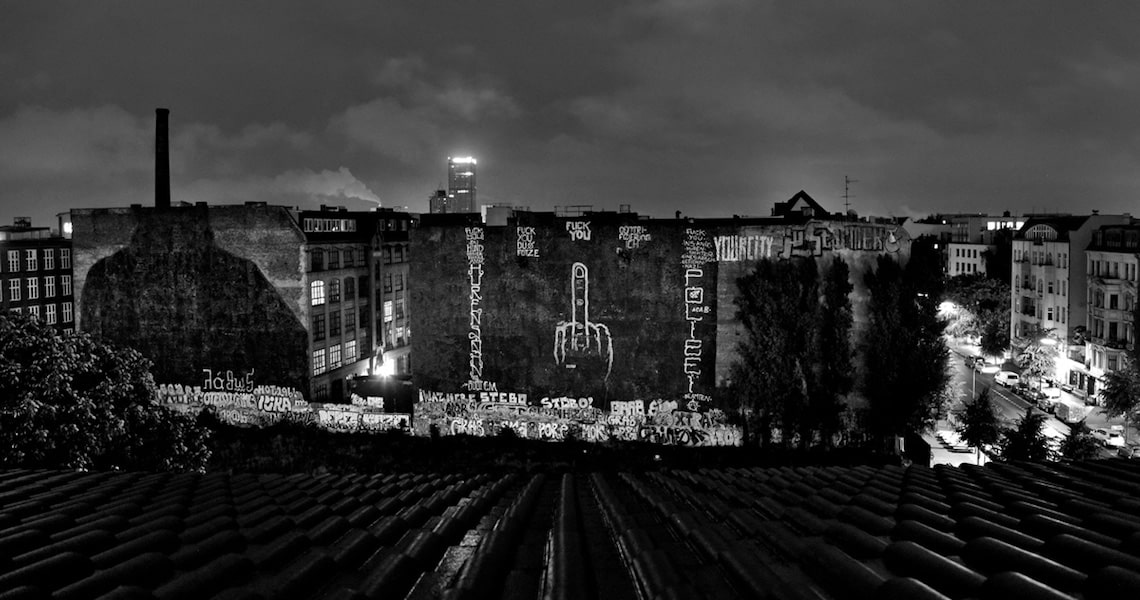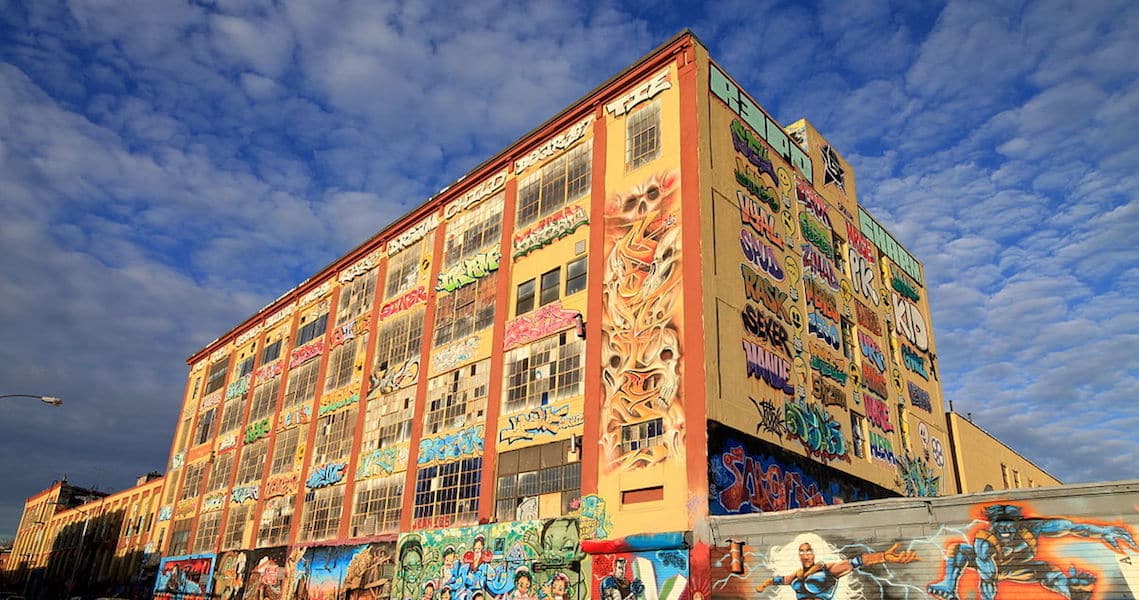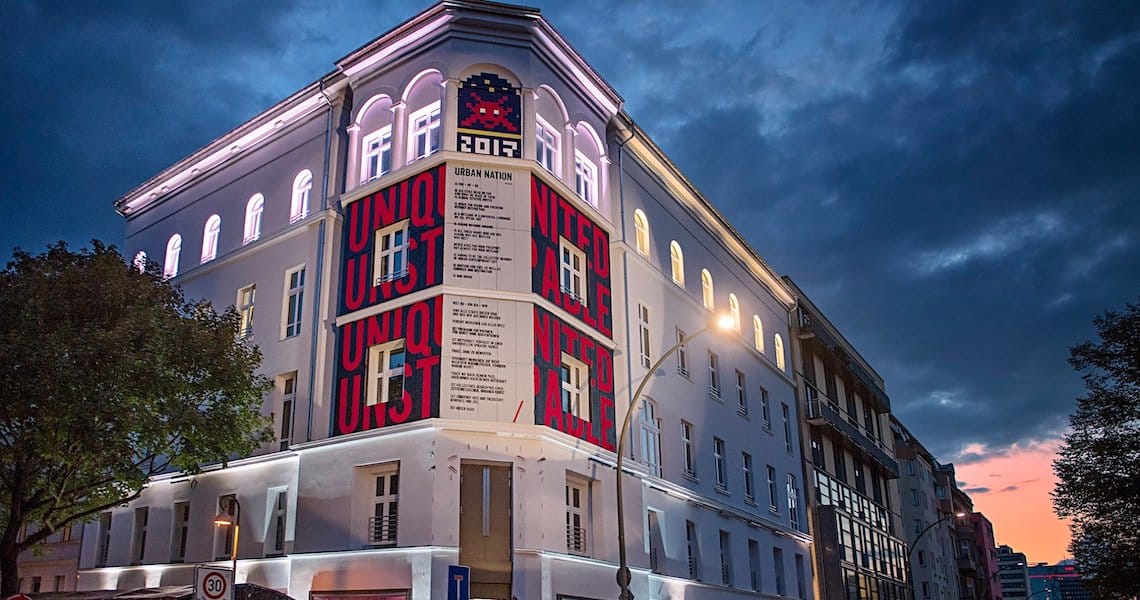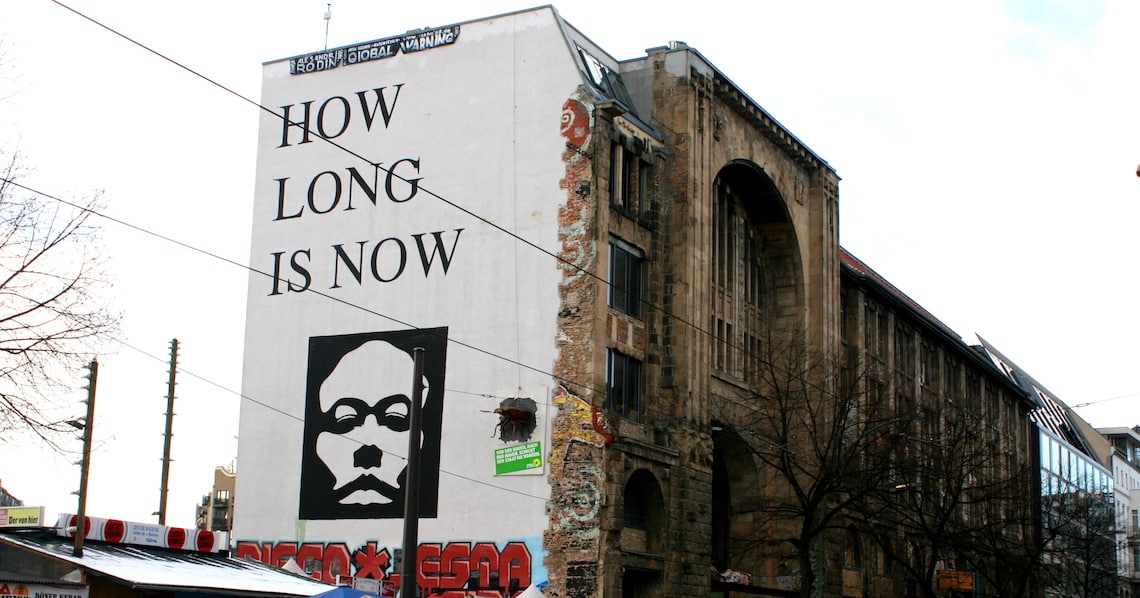
Thomas von Wittich – The F Word by Berlin Kidz, 2016. Crop.
The world is experiencing a trend of urbanization, while experts estimate that by the year 2050, about 66% of the planet’s population will reside within cities. Good or bad, cities are definitely the future of the human race, as rapidly growing, everchanging centers of economy, politics, and culture. Ever since the industrial revolution, ongoing changes have gone hand in hand with urban environments, but it was only in the sixties when one more complicated, cultural and economic issue arose – the matter of gentrification.
Coined in 1964 by Ruth Glass, gentrification meant that “The social status of many residential areas is being ‘uplifted’ as the middle class—or the ‘gentry’—moved into working-class space, taking up residence, opening businesses, and lobbying for infrastructure improvements.” As a consequence, working-class families were forced to move out due to the inevitable rise in housing and real estate prices. Coming into focus in the past one or two decades, gentrification has changed little of its original methods since its continuously changing the way cities look and feel across the globe while creating the same, discriminatory social outcome.
It would be wrong to claim that gentrification is the same in every corner of the Earth, and it’s clear that it differs greatly between the USA and Europe already, but there is one particular feature that follows this phenomenon faithfully, regardless of where it’s happening. This feature is art.

View of 5Pointz in Long Island City, Queens, New York City, January 2013. Source Wikimedia Commons
Street Art and Gentrification – A Tight Relationship
There is a general notion that the first of the four waves of gentrification is led by “artists, bohemians, and gays”, as harbingers of transformation. This often means that the first shiny mural brings something other than aesthetics. It’s often followed by hoards young successful people (the infamous hipsters) seeking an “authentic” lifestyle, populated with “cute” shops and street art. There has been more than one protest against this type of gentrification, from New York, LA to London and Berlin, although the process appears unstoppable. This is perhaps why a special odium has been directed towards Street Art, especially when it starts popping around derelict city areas, with little artistic background.
Although it often rejects it, street art can definitely serve as a catalyst for gentrification, but it can also fall victim to this process. On many occasions, artists do not participate in the neighborhood upscaling consciously, but they are manipulated by real estate developers. When developers detect a lively borough with colorful shops, street art, and galleries, they immediately see a chance for excellent investment returns.
One of the most prominent examples of the artists being played is the story of 5Pointz in Queens. One the heart of the graffiti movement, the building is today demolished with a new condominium complex being built in its place. The key point here is that artists were given permission to paint on the old structure without restraint by the owner Jack Wolkoff, since the 1990s. When the building became a famous pilgrimage site for the street art lovers worldwide, he decided to develop it, completely disregarding the significance the site had for the art community. A group of artists did sue under the Visual Artists Rights Act of 1990, but the process is far from over.
In Europe, London is among the leading cities protesting against gentrification, although its Shoreditch and Hackney have already been changed. In New York, Williamsburg and Bushwick are the symbols for this phenomenon, and in Miami, it’s Wynwood. All of these neighborhoods are covered with different types of Street Art, from small tags and stencils to murals.
A different type of manipulation of street artists seems to be happening in Berlin. While one of its famous squats, Kunsthaus Tacheles, was completely abandoned under pressure in 2012, different Kiez have grown into small Street Art centers. Many of them have been welcoming both local and international artists, but the problem began when numerous talented creatives started being invited to embellish facades in different developing neighborhoods, while few of them actually engaged with the local community. Since the project funded by a real-estate developer, many figures from the Berlin’s scene are protesting the outcome. Looking as far as Australia, Melbourne appears to have the same problem. It will be interesting to monitor how these far-apart urban communities will handle and resolve the issue over time.
A burning gentrification-related issue in Berlin concerns its clubbing hub, the RAW area, which is undergoing a gentrification plan similar to 5Pointz. A local resident told us that about ten years ago, the area was semi-abandoned, with heaps of empty warehouses. It was a “paradise for artists and writers all over the world” he said, and the only people who actually spent time there lived in the area. Today, only one decade later, the area turned into a Berlin’s own hipster purlieu, not unlike Shoreditch. Nobody knows how long will this über cool, semi run-down environment survive, but there are rumors of real estate developers eyeing the area and that there might be even a plan to demolish it by 2020 in order to build a huge office complex! According to the resident who shared the story, the whole plan hides an even greater political game. Located in Friedrichshain-Kreuzberg, a left-wing governed borough, RAW area would definitely change the electoral distribution if it housed a sudden surge of wealthier, right-wing voters. However, if luxury offices are built, then they can be either rented or purchased by the conservatives, but they would not become residents and the political situation would remain unchanged. It’s safe to claim that not many leftists would be able to afford shiny new offices in this or any other area, especially if they come from the artistic sphere. The conclusion would be that there might be some kind of a deal between the local government and the real estate developer, in order to make the profit and keep the power at the same time, whereas ideology has little to do with anything. If this rumor proves to be true, who knows how the area will change in the following decade, with hordes of yuppies wanting their working surroundings clean and inoffensive. We are yet to see if the word of the street will come true.

Is this gentrification? Shepard Fairey’s controversial mural in Detroit. Source
How to Recognize the Gentrification Art
A political movement, Street Art has grown into one of the most diverse artistic phenomena today, coming in various forms and sizes, from the smallest stencils to the largest wall paintings. Utilizing its multifaceted nature and the vast diversity of the street art techniques, gentrification directors managed to sneak their agenda beneath the glossy imagery. In a rather bleak article from 2015, Rafael Schacter argued that “It appears political while, in fact, being perfectly non-partisan. It performs a charade of rebellion and insurgence, while being officially sanctioned by commission and invitation. It constructs the perfect “cool” conditions for the “bohemian” hubs that the creative city requires. Yet it has severed itself from its radical roots, not simply by selling itself, but (even worse) by selling a false notion of place,” highlighting the benign concept of the gentrification-led murals. This characteristic could be the first thing an observer can notice when deciding whether the beautification process is at hand.
“Street art must interact with the public in a natural, spontaneous and creative way”, a scholar Nicholas Riggle pointed out in a 2013 article written by Fanny Arlandis on the subject.
According to these educated arguments, it’s easy to conclude that when there is no context, there is no veracity. And that a pretty picture is just not enough.

Accused to be the creator of pretty pictures – Urban Nation Museum. Source https://www.facebook.com/urbannationberlin/
Artwashing – Hiding Behind the Picture
The term “artwashing” was coined to criticise corporate sponsorship of the arts, with advertising being masked underneath the artsy appearance, but it has assumed a much wider meaning since. It remains very relevant in terms of both gentrification and street art, interconnected with the significance and malign nature of advertising, often denounced, but also supported, by various artists.
For example, more than 60 galleries opened in NYC’s Chinatown in the past three years. Still, Los Angeles’ neighborhood of Boyle Heights emerged as one of the first battlefields against artwashing, but even though the community is still very vocal, the upscaling seems difficult to stop.
This problem arises when artists are followed by galleries and other players in the art market. Given that attractive new neighborhoods offer lower rents with trendy environments, manny gallerists prefer to relocate, aiding the gentrification along the way. Many of them bring their own programs with, setting up new spaces amidst the already existing cultural environment. Without interacting with the local community, these spaces provide an extra luster to the trendiness of the upcoming hood, making it seem OK because it’s art. They are, in fact, “artwashing” the gentrification, providing it with moral justification of sorts.
Still, there are galleries that do choose to relocate to the developing neighborhoods but opt to work with local artists, engage the community and aim to contribute to the quality of life, rather than ignore the existing cultural setting.

Famous squat and art hub, Kunsthaus Tacheles, from the West. Now closed. Source Wikimedia Commons
A Good Side of Gentrification
Despite the largely negative criticism coming from all sides in relation to art-led gentrification, not all experts deem it as a negative event. An article written by Jonathan Wynn and Andrew Deene claims that this process could be beneficial, and even “save” some cities, especially the smaller urban centers that are facing bankruptcy. Among the examples, they mentioned the city of North Adams, Massachusetts and the MASS MoCA museum that has been aiding the local economy for several years, without threatening the local communities.
A study conducted by Rachel Meltzer of New York’s Milano School of International Affairs at The New School examined in which way did the gentrification impact small businesses in New York City between 1990 and 2011. The finding was that small businesses are overall not displaced at levels higher than that seen in non-gentrified neighborhoods, thus opposing the general opinion.
Finally, Detroit is one of the cities that might benefit from a little gentrification, claims Joel Kurth, since it’s still (not very successfully) recovering from the housing market crisis of 2007. Ever since, the Motor City deviated from its long industrial history and became something else. Although it’s a proud center of a lively Street Art scene, it appears to have been hit by gentrification very lightly. It’s undeniable that Detroit became one of the Street Art centers over the past decade, with growing art community and artists swarming the town. However, it may be that due to the lack of institutional support that the arts never grew to become a magnet for others, like it usually happens, despite the city being host to one of the biggest mural festivals in the States. To be fair, this might just prove to be a good experiment, because without too much commercialization, price surge and gentrification, the Rock City might just prove to grow into a very unique, influential and international contemporary art hub.
Observing the urban renewal process from a different angle, we have to agree that it is a complex phenomenon. While it may be spearheaded by art, the creative sphere lies far from its core. It’s rather a mask put on by the large capital in order to make the upscaling more appealing to the people. Seduced by the charm up-and-coming neighborhoods possess, sometimes even locals can swallow the change more easily, but when it comes to the point – the need to control gentrification comes out stronger than ever.

Famous murals by Blu in Berlin, removed in 2015 by the artist in protest of gentrification. Source Wikimedia Commons
Can We Control Gentrification with Art?
Street Art is organically connected with the local economy. It’s a result of each individual environment and its laws, its political situation and its social tendencies. Therefore, it’s not very surprising that cities often feature street art as a means to attract more tourists. More and more artists are creating murals with permission from the government and the officials are realizing the importance of public art and aesthetics. In general, Street Art has been gaining recognition and it strikes a vastly positive note globally. With its role in the gentrification being undisputable, what can Street Art professionals do in order to minimize the negative effects of the process?
Perhaps one of the first things the artists should mind is their own behavior towards the environment they choose to live in. Oftentimes, creatives show the need to create a “new” community, ignoring the cultural setting they have found. Thus, they are pushing the change, ignoring the local community and welcoming other gentrifiers. So, the solution would be to do the opposite – to engage with the community, to learn about the history and the people occupying the area, and to help preserve the actual spirit of the place. It’s critical to be aware of the struggles of the vulnerable social groups, aiding them to fight against discrimination and harassment. In this regard, public art can be a powerful tool in representing the community and criticizing the contemporary way of life, in sharing ideas and inviting the residents to engage in the neighborhood’s development, while keeping its culture and history intact. Or as Shepard Fairey put it in a year-old interview he gave to the Miami New Times: “I think the argument about the evolution of neighborhoods and gentrification is a lot more complex than the role of art. But if we’re focusing on art and artists, I do think that acknowledging the history of a place is the polite thing to do.” Although we cannot but agree with Fairey, we also cannot overlook his rather controversial involvements when it comes to authorized mural painting around the world. Some of those happened in Berlin, too.
If we agree that art might be a factor in gentrification, we can surely recognize that it’s hardly the chief reason behind it. In the hands of the money players, real estate developers and profit seekers, Street art is often treated as nothing more than wallpaper. As citizens of the world, urban dwellers, and art professionals, we are under the obligation to engage, follow and speak up whenever we feel that art is being misused or misinterpreted to the benefit of different corporations.
Only this way, preserving a community through art will become not only possible, but it could drive a change where gentrification might eventually change its substance, from discriminatory to inclusive.